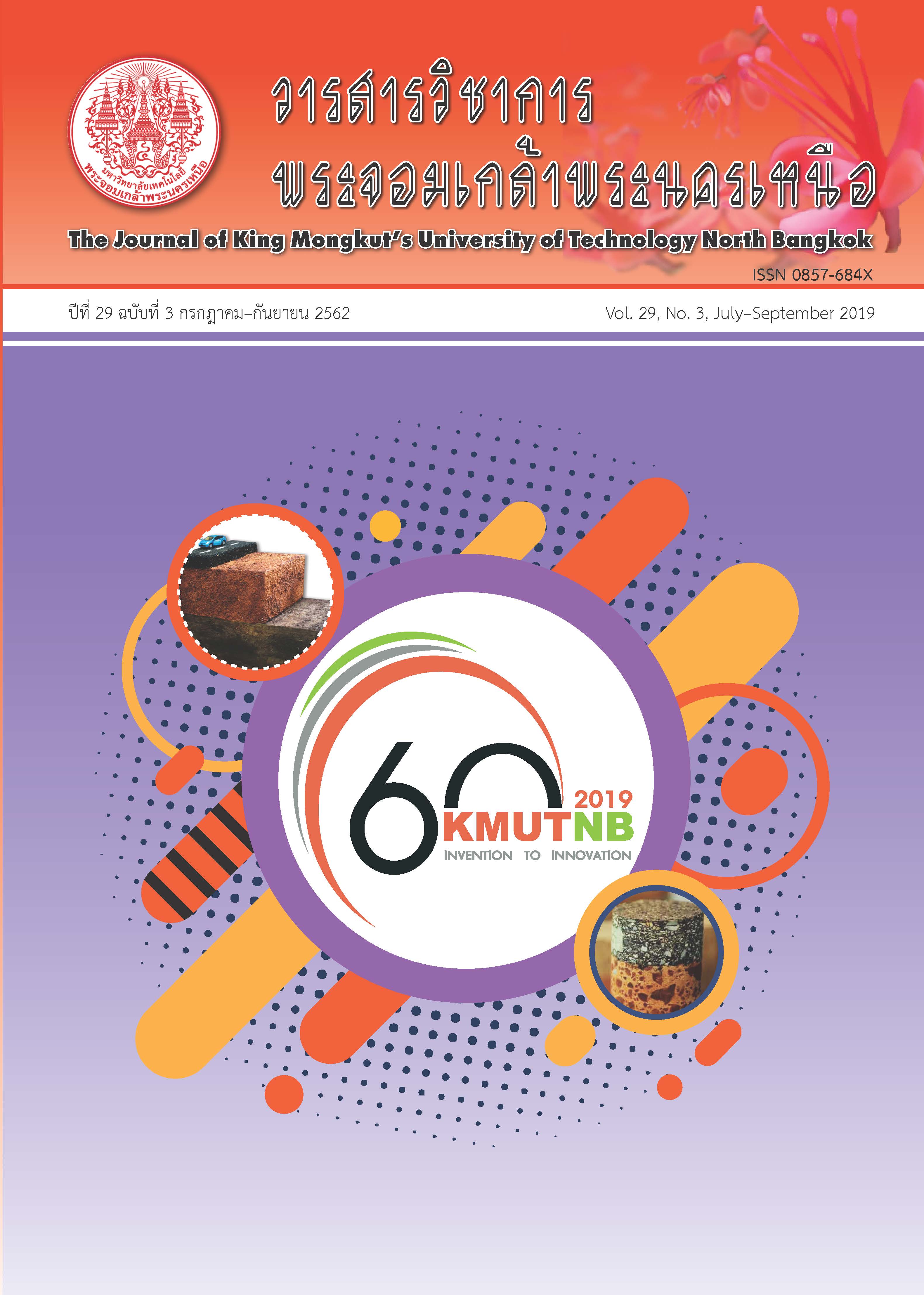Risk Assessment by the Fault Tree Analysis (FTA) and Analytic Hierarchy Process (AHP) of Infectious Waste Management in Health Promoting Hospital
Main Article Content
Abstract
The purpose of this cross-sectional study was to integrate the fault tree analysis and analytic hierarchy process for assessing the medical waste management practices and associated risk perceptions in eight health promoting hospitals in NongKhae, Saraburi province. A cross-sectional study was conducted during July 2017 to April 2018. The 4 stages of treating medical waste consist of segregation; storage; transportation; and disposal of health-care waste. The fault tree analysis and analytic hierarchy process technique were used for determining the relative weight of hazard probability of occurrence. Very high potential risks are found on all the 4 dimensions whereas non-compliance with standard procedures occurs in 3 categories: the segregation, transportation and disposal of infectious waste. These aspects of medical waste handling processes were analyzed and determined in high-risk levels: lack of containers for infectious waste separation; improper vehicles and means of waste conveyance; and waste incinerators’ insufficient control of temperature during the burn. The moderate risk level was determined in these aspects: infectious waste separation, storage, and transportation, as well as absence of sufficient supervision and lack of specific storage areas for avoiding contamination and the spread of pathogenic microorganisms. To sum up, treatment and disposal of healthcare waste may pose health risks. The governing board and management of health promoting hospitals should establish safety measures for infectious waste treatment in order to efficiently address the risks that are likely to arise from routine operational procedures.
Article Details
The articles published are the opinion of the author only. The author is responsible for any legal consequences. That may arise from that article.
References
[2] US Environmental Protection Agency. (2013, December). Medical-Waste. United States Environmental Protection Agency [Online]. Available: http://www.epa.gov/osw/nonhaz/industrial/medical/index.htm
[3] World Health Organization. (2018, March). Healthcare waste. WHO Headquarters. Avenue Appia, Geneva [Online].Available: http://www.who.int/news-room/fact-sheets/detail/health-care-waste
[4] Pollution Control Department Infectious Medical Waste (2017, November). Infectious waste volume. Office of Natural Resources and Environmental Policy and Planning. Bangkok. Thailand [Online]. Available:http://www.onep.go.th/env_data/wp-content/uploads/2016/08/56.pdf
[5] N. Limnios, Fault Tree, Wiltshire: ISTE Ltd, 2007.
[6] W. E. Vesely, F. F. Goldberg, and N. H. Roberts, Fault Tree Handbook, 1st ed., Washington, DC, U.S. Nuclear Regulatory Commission, 1981.
[7] K. C. Hyun, S. Min, H. Choi, J. Park, and I. M. Lee, “Risk analysis using fault-tree analysis (FTA) and analytic hierarchy process (AHP) applicable to shield TBM tunnels,” Tunnelling and Underground Space Technology, vol. 49, pp. 121–129, 2015.
[8] A. Lindhe, L. Rosen, T. Norberg, T. J. Pettersson, O. Bergstedt, J. Astrom, and M. Bondelind “Integrated risk analysis from source to tap: Case study Göteborg,” in proceedings of the 6th Nordic Drinking Water Conference, Oslo, 2008, pp. 231–241.
[9] H. U. Jian, C. Junying, L. Jiahong, and Q. Dayong, “Risk identification of sudden water pollution on fuzzy fault tree in beibu-gulf economic zone,” Procedia Environmental Sciences, vol. 10, pp. 2413–2419, 2011.
[10] D. Makajic-Nikolic, N. Petrovic, A. Belic, M. Rokvic, J. A. Radakovic, and V. Tubic, “The fault tree analysis of infectious medical waste management,” Journal of Cleaner Production, vol. 113, pp. 365–373, 2016.
[11] C. Kongphet, “An application of the analytic hierarchy process for supplier selection in lens and camera manufacturer,” M.S. thesis, Department of Industrial Engineering, Faculty of Engineering Thammasat University Bangkok, 2016 (in Thai).
[12] N. Wichapa and P. Khokhajaikiat, “Solving multi-objective facility location problem using the fuzzy analytical hierarchy process and goal programming: A case study on infectious waste disposal centers,” Operations Research Perspectives, vol. 4, pp. 39–48, 2017.
[13] C. C. Ho and C. J Liao, “The use of failure mode and effects analysis to construct an effective disposal and prevention mechanism for infectious hospital waste,” Waste Management, vol. 31, no. 12, pp. 2631–2637, 2011.
[14] A. Dakkoune, L. Vernieres-Hassimi, S. Leveneur, D. Lefebvre, and L. Estel, “Risk analysis of french chemical industry,” Safety science, vol. 105, pp. 77–85, 2018.
[15] G. C. Subramanian, M. Arip, and T. S. S. Subramaniam, “Knowledge and risk perceptions of occupational infections among health-care workers in Malaysia,” Safety and Health at Work, vol. 8, no. 3, pp. 246–249, 2017.
[16] Startegy and Planning Division, Star Hospital Health Promotion, Nonthaburi: Buddhapress, 2016 (in Thai).
